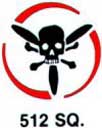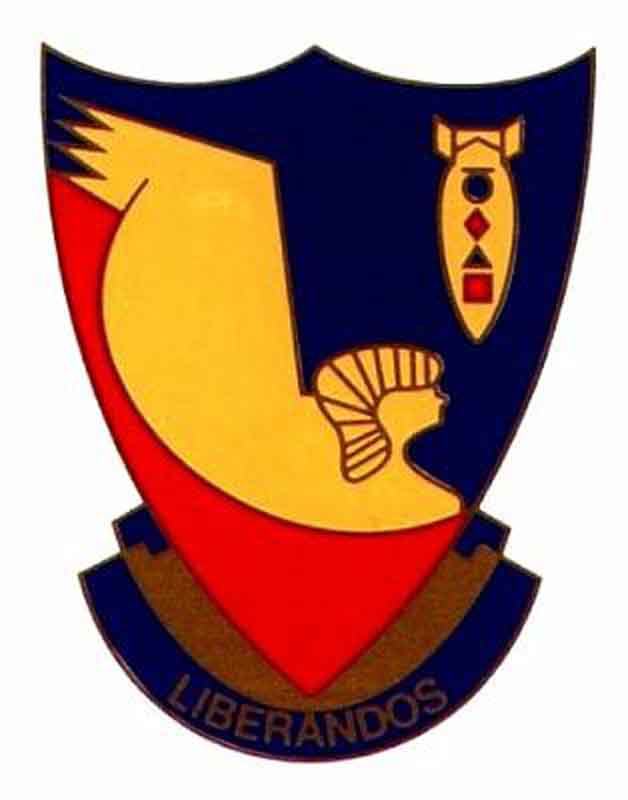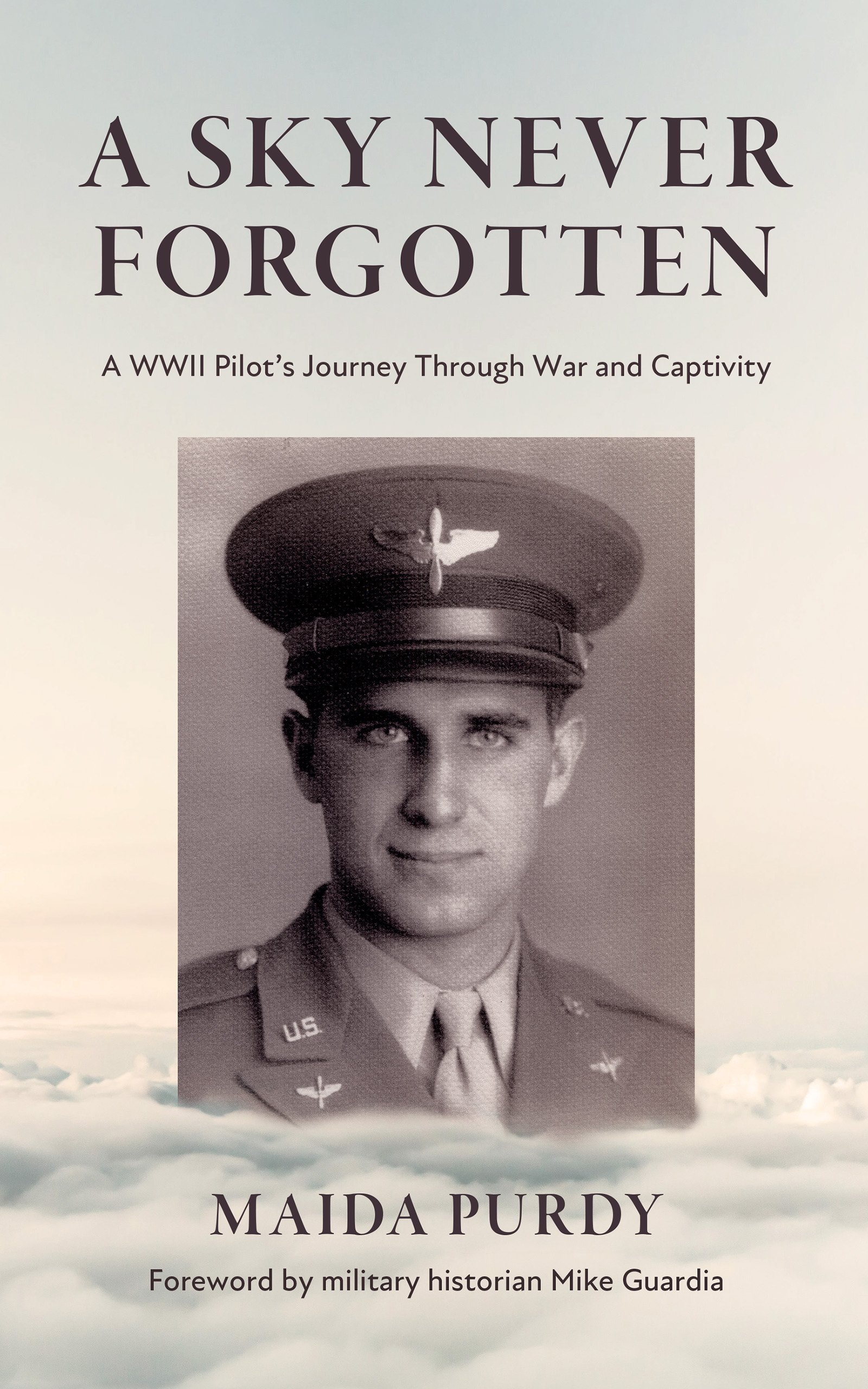Robert E. Andrus, Mission January 31, 1945
Much to our surprise on the afternoon of Jan 30, 1944 [should be 1945] I found that my crew was scheduled to fly the next day's mission. Under the normal rotation we should not have been scheduled for at least two more days. Further, we were to fly the number 7 (slot) position which was usually reserved for newer, less experienced crews. Adding to the confusion was the fact that we not going to fly our usual aircraft but were to take the brand new B-24H that the squadron had received a few days earlier.
All my efforts to find out what was going on were non productive. Sqd Ops finally told me that they had been directed by Group Operations to schedule me by name to fly that aircraft in the slot on tomorrows mission and I would probably find out why at the morning briefing. Very strange!
At the morning briefing I learned that the 376th would be the last group in the bomber stream, the target was Moosbierbaum and the flak would be intense. It quickly became apparent that since the 512th box was tail-end Charlie in the group formation, I would be the last ship over the target. It wasn't until we arrived at the hardstand where our aircraft was parked that I finally found out what was going on.
Both the Gp Ops officer and the Gp Intel. officer were waiting for me and introduced me to my newest crew member: an aerial photographer. I was then briefed that my mission was to bomb the target with the 512th and when they rallied off after they dropped their ordinance I was to make a 180 degree turn and return to the IP and make another run over the target. It seems they suspected the oil refinery had long since been destroyed and was being camouflaged to appear operational. Our second run over the target would hopefully provide bomb damage photography taken before they had an opportunity to reemploy their camouflage. I was then advised that we had been selected to fly this mission because we were experienced and had one of the most competent navigators in the Group, Len Winograd.
The aircraft we were to fly was basically an "H" model that had been modified at the factory during its manufacture. The nose turret was eliminated and a huge, 7-lens mosaic camera which incorporated the bomb sight was installed in its place. The photographer had received over 150 hours of experimental training on a similar camera that had been installed in a modified B-24D back in the states. Although I was introduced to him at the hardstand, I am unable to remember his name.
He and Flight Officer Durham, the bombardier who was receiving his mandatory checkout flight brought the number of crew members on this flight to twelve.
The flight to the target was normal; the aircraft performed beautifully and fuel consumption was less than normal. There was absolutely no indication of the problem we were later to encounter. During this portion of the flight I briefed the crew on intercom about our additional mission. When I finished, there was a moment of silence and then a voice on the intercom said, "hey, I ain't gonna go unless I get extra mission credit." This brought on lots of laughter.
As I recall, the bomb run was flown at 23,000 feet and although the flak was very heavy, we received only minimum damage. After the bomb drop, the flight made a descending right turn to clear the area as rapidly as possible. I maintained 23,000 feet and flew a racetrack pattern back to the IP. Once we were established on the track back to the target I turned control of the aircraft over to the photographer who was using the bombsight as a view finder for the camera. While the flak continued to be heavy on this run, we received minimal battle damage.
After completing the photo run I made a right descending turn and picked up the heading for return to base. Almost immediately the right outboard engine started to fail. Fuel pressure fluctuated wildly and although the manifold pressure gauge indicated we were not getting any power, I was unable to control the engine RPMs. This left me no choice but to shut down the engine and feather the prop.
A check of the fuel sight gauges indicated plenty of fuel for the return to base. Despite this, all engine instruments clearly showed the loss of the engine was due to fuel starvation. Just as I made the decision to unfeather the engine, the same problem began with the right inboard engine. Using the feathering button to keep the RPMs from exceeding the max allowable we tried everything we could think of to overcome the power loss. Cross feeding the fuel tanks, swapping the electronic control boxes for the turbo superchargers all failed to correct the problem.
With two engines on the same side feathered, the flying characteristics of a combat configured B-24 left much to be desired. Forced to begin a descent in order to maintain minimum flying speed, I directed the crew to jettison everything in the aircraft not required to maintain flight. While I still held out hope that we would have sufficient altitude to make it over the Alps, the left inboard engine failed inexactly the same manner.
With three engines feathered, the B-24's flight characteristics approximate that of a large, round ball of lead dropped from a great height. It was very depressing to know that we had all that fuel on board and not be able to access it.
By this time we were down in a box canyon of the generic Alps in northern Yugoslavia and descending through 9,000 feet. Since there was no alternative, I directed the crew to bailout. This was in the vicinity of Bijac, Yugoslavia. I was immediately captured and remained a POW for the duration of the war.
Liberation and return to allied military control came on April 29, 1945. In the latter part of May, 1945 while undergoing processing and rehabilitation at Camp Lucky Strike, LeHavre, France, I was interviewed and debriefed by US Army Intelligence agents. It seems that an identical camera-equipped B-24H had been delivered to the 98th Bomb Group at Lecce and it went down on its first mission under the same circumstances that we had experienced. This raised suspicions of sabotage and an investigation was conducted. It revealed that during manufacture someone had installed pressure-sensitive check valves in the main fuel lines to each engine. The valves remained inoperable until someone removed a small easily accessible pin to activate them. They were designed to remain open while climbing and maintaining constant altitude and close, shutting off the fuel supply, when encountering increasing barometric pressure i.e. a descending aircraft. The saboteur was apprehended and the valves were removed from the remaining four camera-equipped B-24s.


The website 376bg.org is NOT our site nor is it our endowment fund.
At the 2017 reunion, the board approved the donation of our archives to the Briscoe Center for American History, located on the University of Texas - Austin campus.
Also, the board approved a $5,000 donation to add to Ed Clendenin's $20,000 donation in the memory of his father. Together, these funds begin an endowment for the preservation of the 376 archives.
Donate directly to the 376 Endowment
To read about other endowment donation options, click here.
Reunion
NOTE change in the schedule !!
DATES: Sep 25-28, 2025
CITY:Rapid City, SD
HOTEL: Best Western Ramkota Conference Hotel; 2111 North LaCrosse St., Rapid City, SD 57702; 605-343-8500
Click here to read about the reunion details.




















